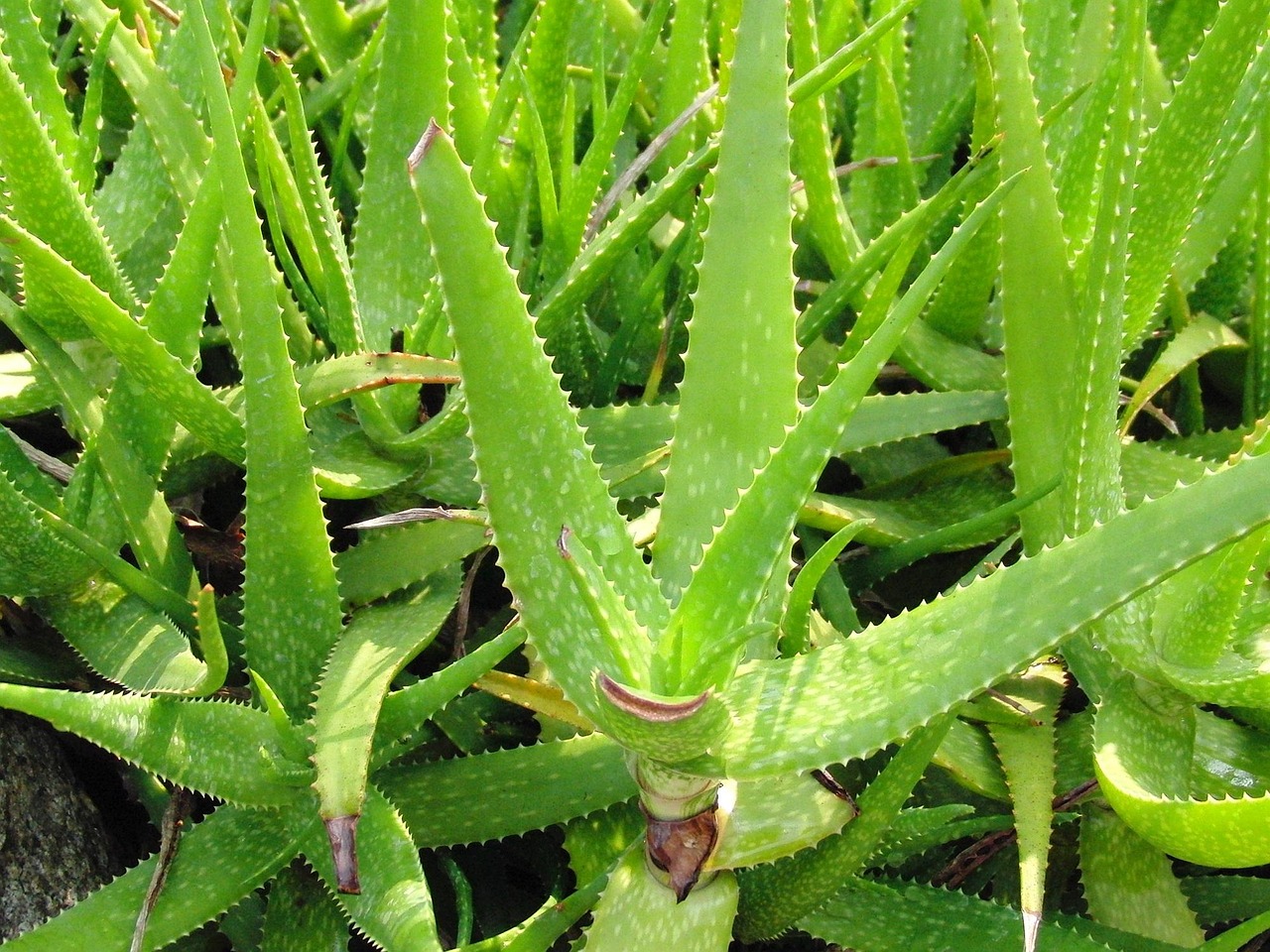
Aloe
Aloe vera
Basic Information
🌿 Family: Asphodelaceae🗺️ Zone: 9-11
Other Names:
- True Aloe
- Medicinal Aloe
🌡️ Ideal Temperature : 55°F – 80°F
🔥 Heat Tolerance: Up to 90°F
❄️ Cold Tolerance: Down to 40°F
🌱 Type: Perennial
Layers
- Ground
Functions
- Medicinal
- Ornamental
- Ground Cover
Pests
No pests associated with this plant.
Description
Aloe vera is a succulent plant forming a rosette of lance-shaped, fleshy leaves with serrated edges. The leaves are green to gray-green and can grow up to 60 cm (24 inches) long. Mature plants produce a tall spike of tubular yellow or orange flowers. Aloe vera is renowned for the gel contained within its leaves, which has various medicinal and cosmetic applications. The gel is composed of water, vitamins, enzymes, and amino acids, giving it anti-inflammatory, antimicrobial, and wound-healing properties. Aloe thrives in sandy, well-drained soils and can survive in arid conditions due to its water-retentive leaves.
🌞💧 **Sun and Water Requirements:**
Aloe vera prefers bright, indirect sunlight but can tolerate some direct sun. It requires well-drained soil and should be watered deeply but infrequently, allowing the soil to dry out between waterings to prevent root rot. Overwatering is a common cause of failure.
✂️🫘 **Methods to Propagate:**
Aloe vera is easily propagated by:
- **Offsets (Pups):** Small offshoots that grow at the base can be removed and replanted.
- **Leaf Cuttings:** Although less common, leaf cuttings can be used but have a lower success rate due to high moisture content.
🧑🌾👩🌾 **When to Harvest:**
Aloe leaves can be harvested year-round, but it's best to wait until the plant is mature (usually 2-3 years). Harvest the outer leaves by cutting them at the base, allowing the plant to continue growing.
Purpose
- Medicinal: The gel extracted from the leaves is widely used to treat burns, cuts, and skin irritations due to its cooling and healing properties.
- Ornamental: Aloe's unique rosette shape and low maintenance requirements make it a popular indoor and outdoor ornamental plant.
- Ground Cover: Its drought-tolerant nature allows it to be used as a low-maintenance ground cover in dry, sandy environments.